“Three Looks” in the Movie
There are “three views” in the movie, which represent different viewpoints of photography. One is to see on behalf of the audience, which is called objective perspective; the other is to see on behalf of actors, which is called subjective perspective; the third is that the director reminds you to see, which is called the director’s perspective.
The most common one is of course the objective point of view of the audience! Because this kind of viewpoint is so common, it is often ignored. Let me analyze it with you.
The objective point of view (viewing on behalf of the audience) is based on the experience of watching theatrical performances. When we watch a play, the audience area is completely separated from the stage area. The audience sits under the stage with relish and “watches” the occurrence of the story within a certain distance. There is no subjective participation in the process of the story. The so-called objective point of view.
Leave an empty seat in the auditorium and set up a camera to take pictures of the theater performances on stage. This was how early feature films did it. At this time, the camera’s point of view is exactly the same as that of the audience. The drama story is recorded on the film in a way of watching, as shown in the picture below “Magic Bricks”.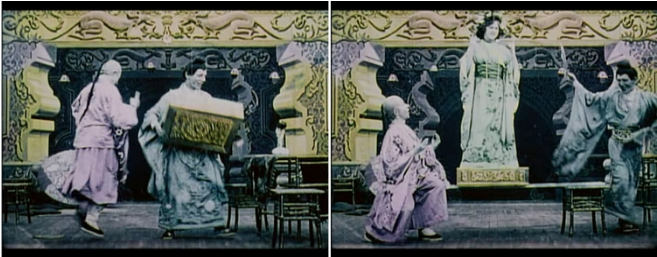
This movie is very funny. Several foreigners pretend to be citizens of the Qing Dynasty and perform magic tricks. At first, a buddy holding a box suddenly turned into a man with braids and jumping around. Then he split a pile of bricks and changed. Here comes a foreign beauty in a Tang suit.
In this film, the camera is fixed at the position where the panorama is taken and the shot is taken to the end, which is a bit dull. All, later, gradually developed a scene change of far, full, medium and near, but the logic behind it is unchanged. The change of scene only represents the change of the observation distance. The camera is still in the audience position. After all, there is no breakthrough. And the “invisible wall” between the stage.
When the camera is no longer satisfied to stay in the audience and jump on the stage willfully, subjective shots are produced. Once the camera runs on the stage, it means abandoning the audience’s viewpoint, and it means that the actors are watching! I have a habit of textual research, let me give you the earliest example.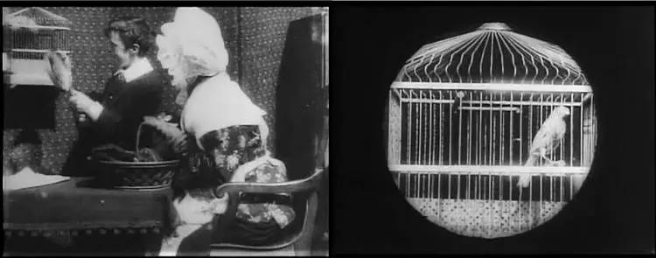
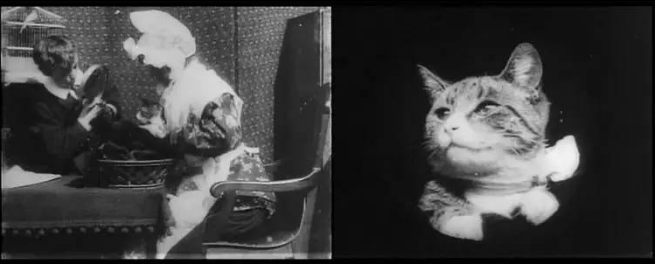
The movie “Grandma`s Reading Glass” is the earliest subjective lens attempt. A little boy curiously picked up his grandmother’s magnifying glass and looked around through the lens. The first subjective lens in movie history appeared miraculously! The director must be excited about the special performance perspective he has discovered. From the boy’s perspective, he shoots several sets of subjective shots in one go. Newspapers, clocks, bird cages, grandmother’s eyes, and cute cats are presented to the audience one after another.
Observing these subjective shots carefully, the little boy saw through the magnifying glass without any distortion, haha! This can be regarded as a flaw in the gangbang. It may be that the director is obsessed with the newly invented technique, so he is too excited and forgets to deal with it.
The audience’s point of view and the actor’s point of view are there, let’s talk about the director’s point of view, let’s make a fictional scene to illustrate. A group of people walked into the conference room (viewpoint of the audience), the actor sat down and looked out the window, and saw a man with a peaked cap riding a bicycle passing by (viewpoint of the actor), behind the actor’s seat, an old handbag ticked slightly sound. There is a time bomb in the bag!
At this time, everyone present, including the male protagonist, had no idea that the danger was about to happen, and the audience had no idea before the performance of this camera. So, whose point of view does the shot of this bag represent?
Obviously, this shot represents the point of view of the director, or the point of view of the storyteller. Its purpose is to remind the audience of the imminent danger, which makes people feel nervous. The director was cruel and didn’t remind the characters in the story, leaving them unaware and defenseless.
Why is the subjective lens the most important?
I talked about the three types of viewpoints in the movie. The audience’s viewpoint is very common. Usually, most of the shots of a film are shot with this viewpoint; the director’s viewpoint is generally used as a tool for the storyteller to remind the audience to pay attention to these two viewpoints. It’s good to know what’s going on. What deserves our focus is the subjective point of view, also known as the subjective lens, for three reasons:
- Only important roles are worthy of subjective shots (use your brain and experience).
- Subjective shots may only be used in important scenes (not necessarily subjective shots, but once used, they must be key plots or important scenes).
- Subjective shots are closely related to the emotions of the characters.
Explain the third point, why shoot subjective shots? Is it just to show what the actors saw? No, the real meaning of subjective shots is to portray the emotions and feelings of the character at the moment by showing what the character sees.
For example, there is a scene in the movie “Looking for a Gun”. After a series of attacks such as the loss of a pistol and the shooting of his former girlfriend, the policeman Ma Shan decided to venture to the train station to lure the gangster to the bait. Before leaving home, the director designed a subjective lens to portray his emotions.
First, Ma Shan was “watching”. In the close-up, he looked tired and looked around the empty room reluctantly. Then came the subjective shot taken from Ma Shan’s point of view. The room was dimly lit and empty, and the furnishings were very simple. Outside the painting were the voices of his wife and son quarreling in the past. The voice that had upset Ma Shan at the moment seemed particularly warm.
From this short subjective scene, the audience read Ma Shan’s complex emotions, heavy pressure, nostalgia for the family and guilt, which accompanied him to the end of death, which seemed particularly sad.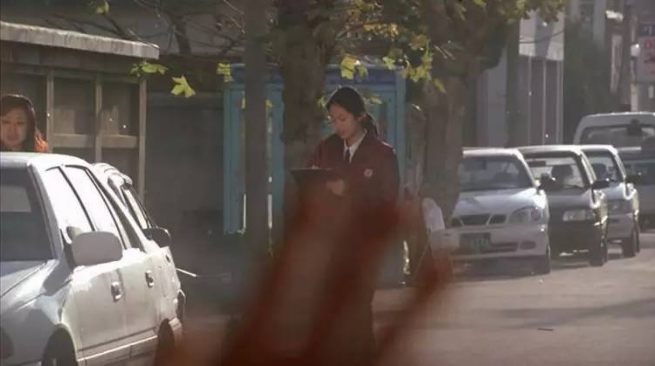
The Korean film “August Photo Gallery” is the first Korean film to be introduced to Hollywood. This film is far less popular than the later popular Korean films such as “Savage Girlfriend”, but the story is still fresh and moving. The protagonist of the story is a photographer who opened a photo studio. Unfortunately, he was terminally ill and knew that he would soon die. In the last part of his life, he fell in love with a beautiful female traffic policeman.
In this scene, the protagonist left the heroine with extreme grief. After a while, in a street bar, he happened to see his beloved girl. This is the most colorful and tear-jerking passage of the movie.
In the subjective lens, soft and sad music sounded, and the actor’s hand was separated from the glass, gently stroking the female traffic police in the distance, until she finished recording the illegal license plate and left with a bright smile. Transparent glass is like an invisible obstacle that cannot be broken through. The lover can see it clearly in the eyes of the lover! The lover is separated by glass, the boundary cannot be crossed! It’s heartbreaking. (See picture above)
To give an example from “Paradise Cinema” at the end, the protagonist Duoduo first met the first lover who influenced his life. This is an extremely important scene in the film and the heroine’s first appearance.
Since it is the first appearance of an important person, of course it must be carefully designed. The director’s plan was to let Duoduo (later a pivotal director) practice photography with a camera. During the shooting, through the lens, he happened to see a beautiful girl.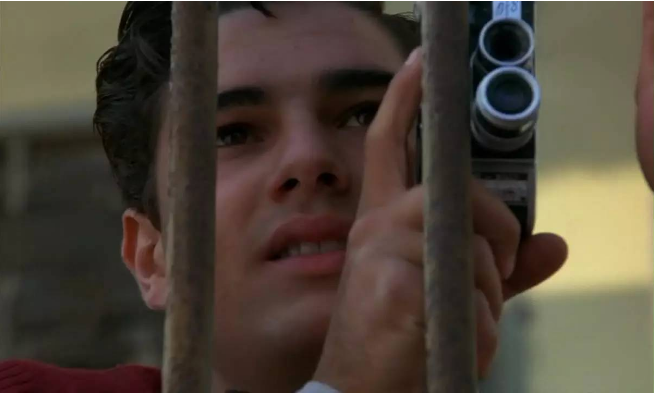
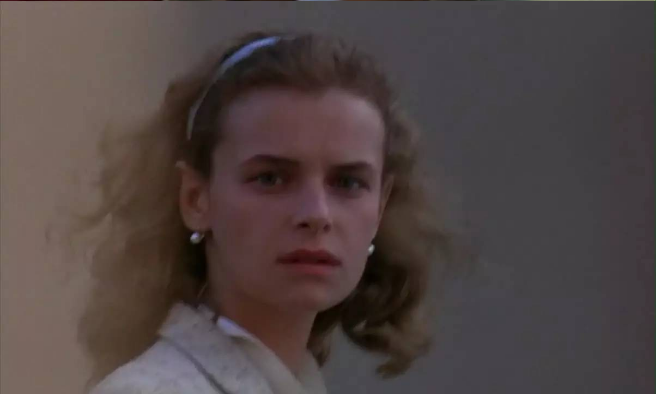
Look at the fascinating woman who calmly drifts past the camera, and then look at the stare and grin of the male protagonist. The young first love is destined to begin!
In the movie, they fell in love vigorously. Later, due to the disparity between the poor boy and the rich business family, the lovers were forced to break up and left their hometown with a lot of hatred. Later, he became a world-renowned director.
In his later years, Duoduo returned to his hometown after he became famous. Through the dusty film, he once again saw the moving appearance of his first love girlfriend…
This film not only praises love, but also praises the power of images! It is a movie that freezes the beautiful love that has long been turned into ashes, and also freezes the beautiful youth that has never returned.
